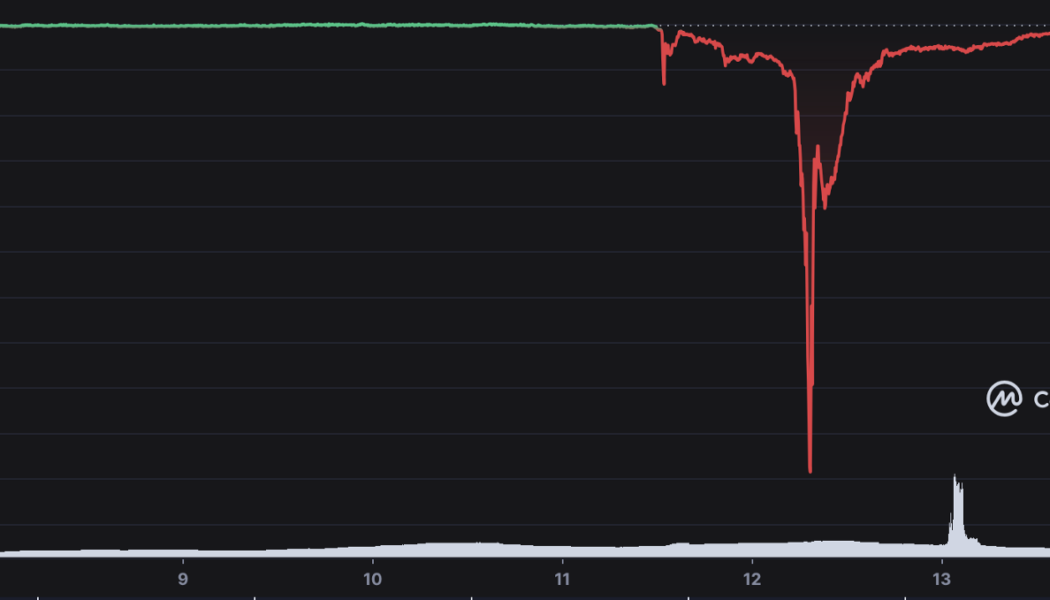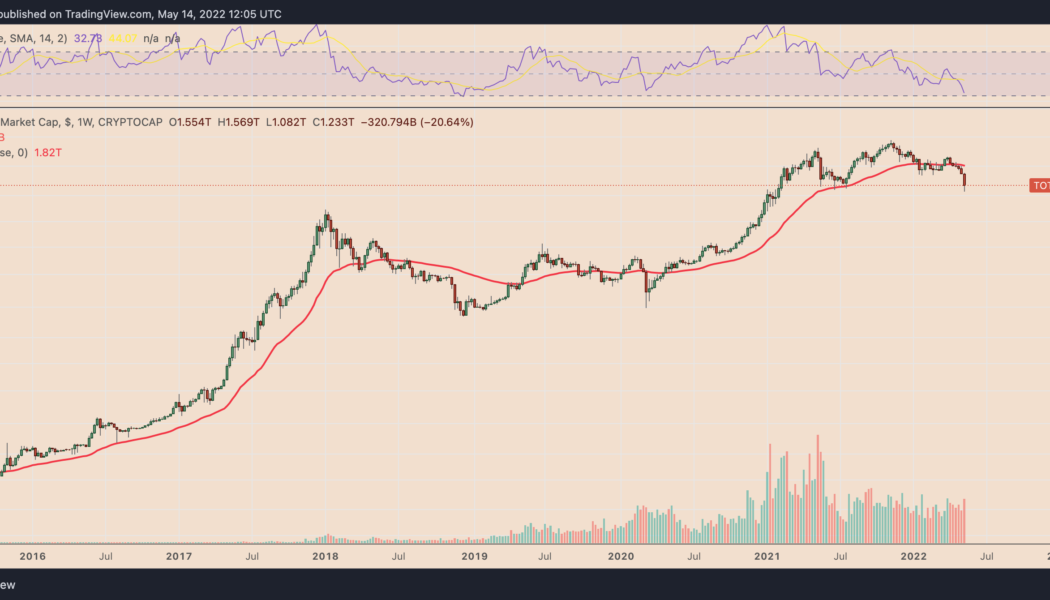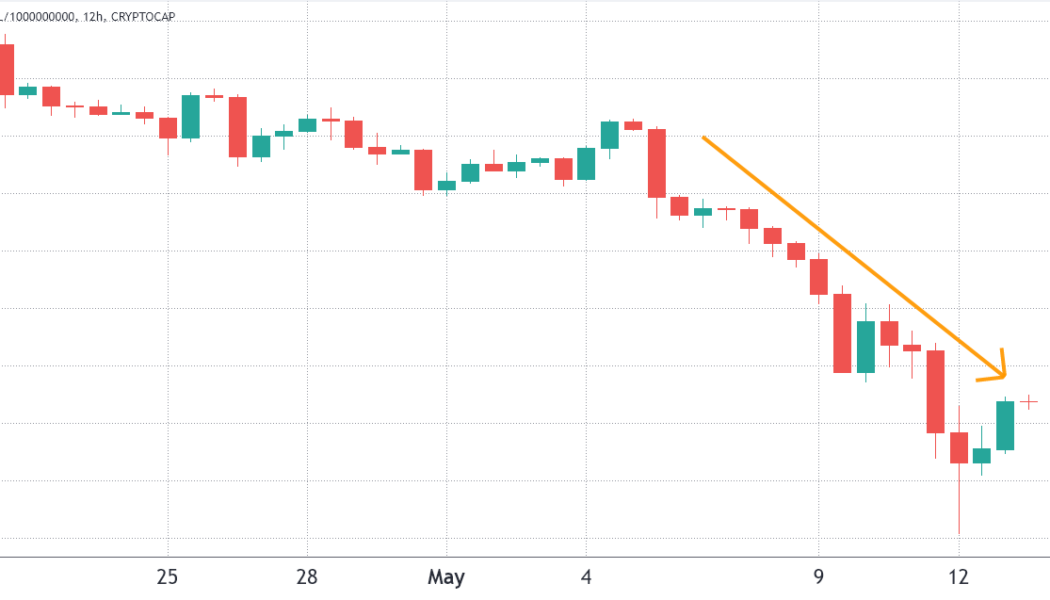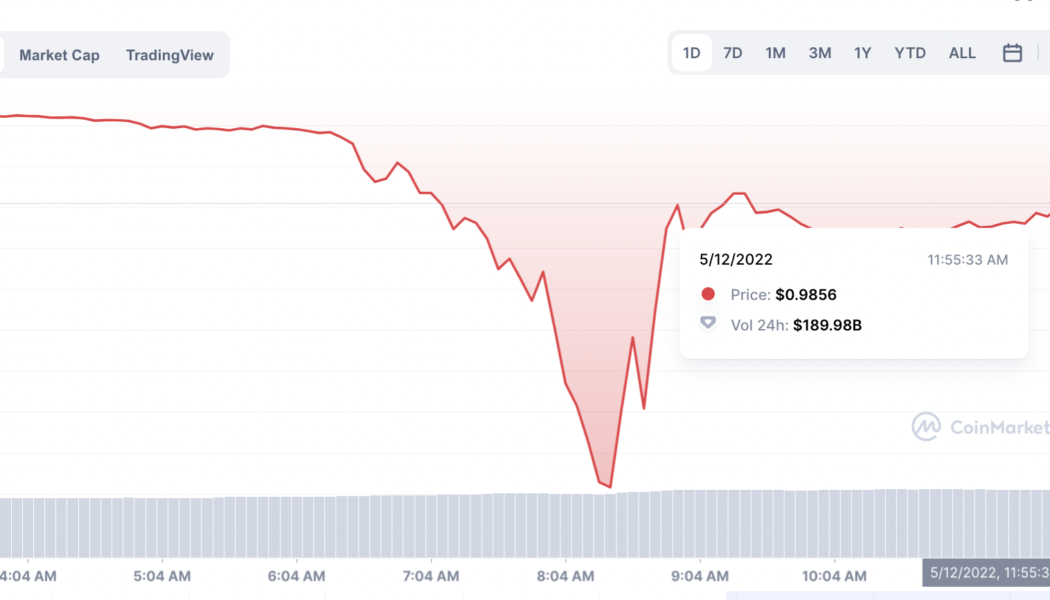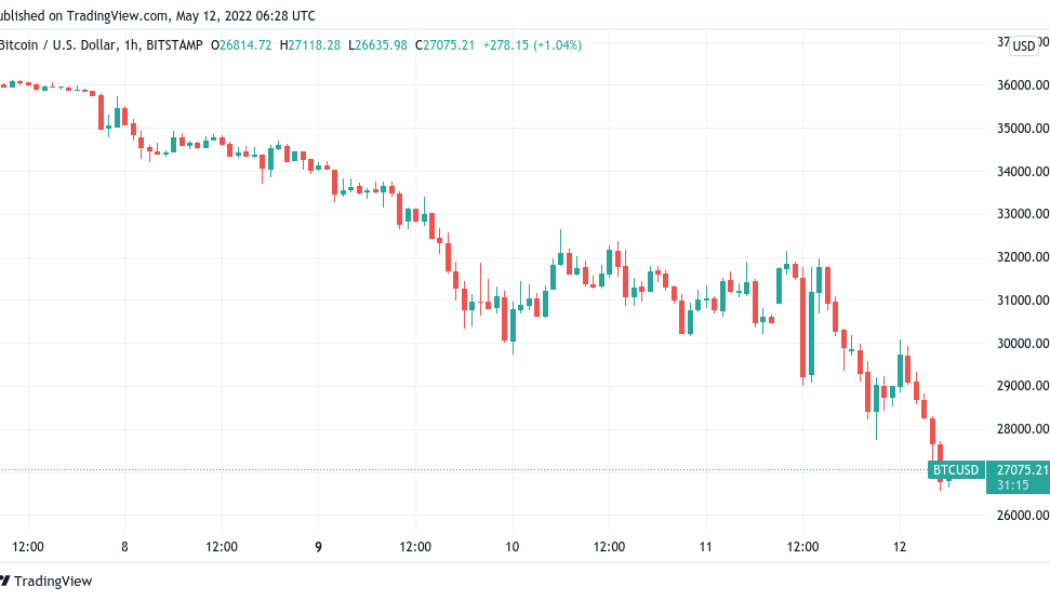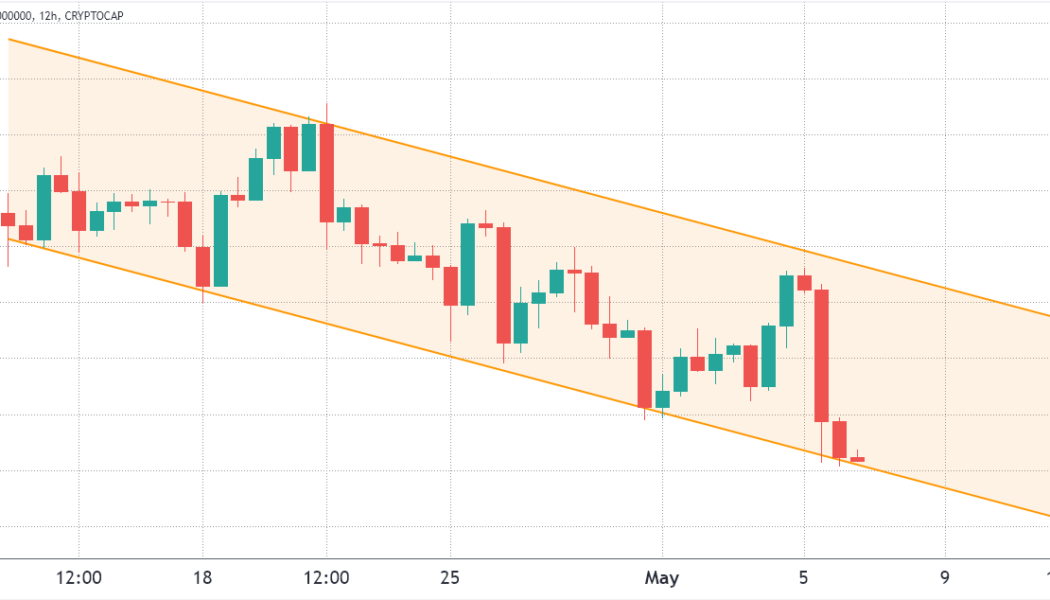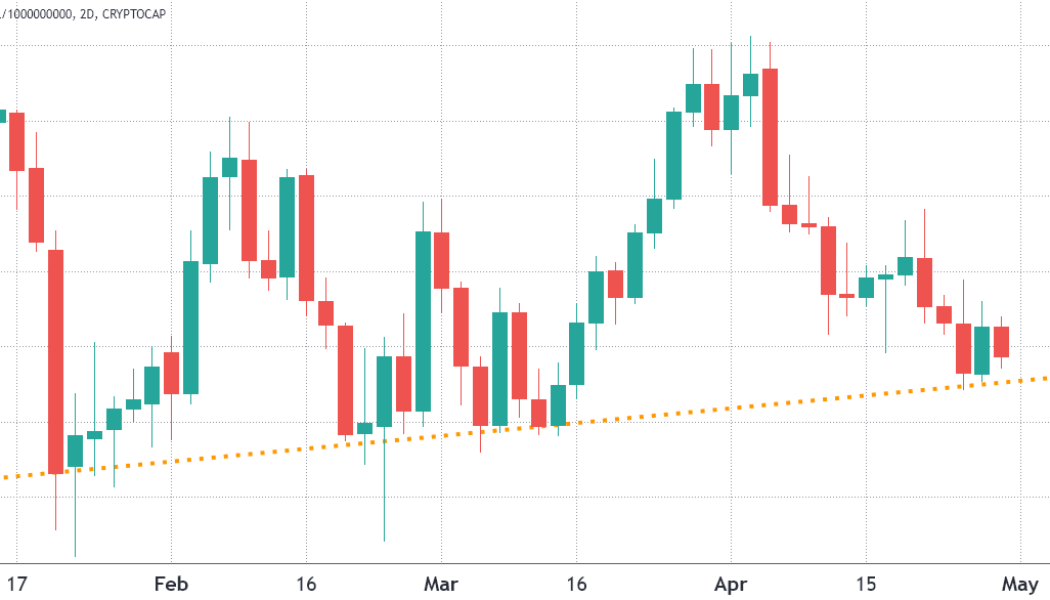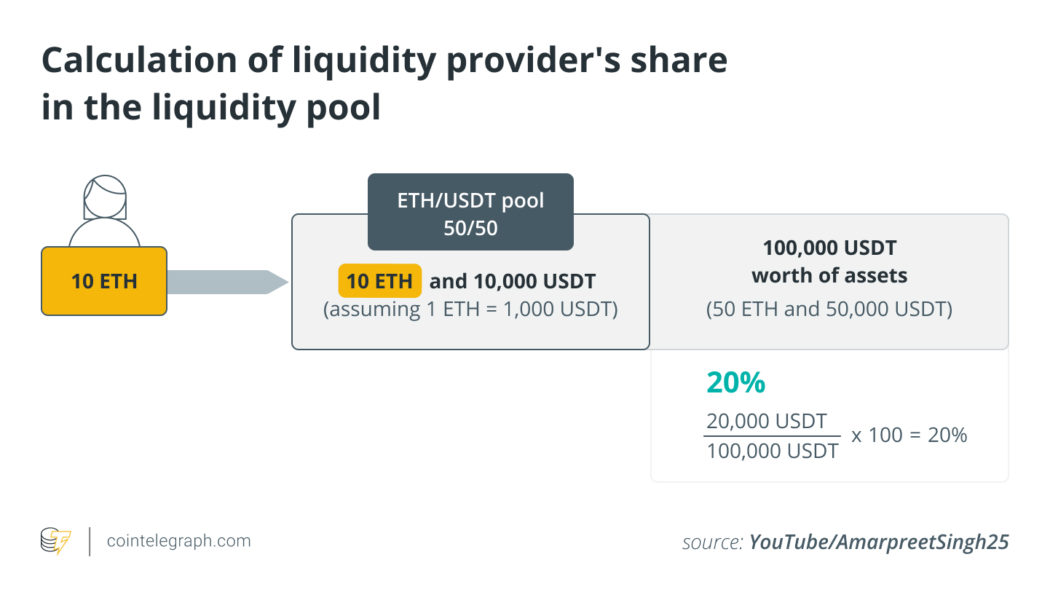Tether
Tether reports 17% decrease in commercial paper holdings over Q1 2022
USDT Stablecoin issuer Tether (USDT) has reported it cut its reserves allocation to commercial paper investments and increased that of United States Treasury bills over the first quarter of 2022. In a Thursday blog post, Tether reported its reserves were “fully backed,” seemingly in an effort to assuage many users’ fears around USDT briefly depegging from the dollar on May 12. According to the stablecoin issuer, its commercial paper holdings over Q1 2022 decreased 17% from roughly $24 billion to $20 billion, with an additional 20% reduction to be reflected in the firm’s next quarterly report. Tether also increased investments in money market funds and U.S. Treasury bills by 13% over the same quarter, from roughly $34.5 billion to $39 billion. “Tether has maintained its stability through mu...
Was Terra’s UST cataclysm the canary in the algorithmic stablecoin coal mine?
The past week has not been an easy one. After the collapse of the third-largest stablecoin (UST) and what used to be the second-largest blockchain after Ethereum (Terra), the depeg contagion seems to be spreading wider. While UST has completely depegged from the U.S. dollar, trading at sub $0.1 at the time of writing, other stablecoins also experienced a short period where they also lost their dollar peg due to the market-wide panic. Tether’s USDT stablecoin saw a brief devaluation from $1 to $0.95 at the lowest point in May. 12. USDT/USD last week from May. 8–14th. Source: CoinMarketCap FRAX and FEI had a similar drop to $0.97 in May. 12; while Abracadabra Money’s MIM and Liquity’s LUSD dropped to $0.98. FRAX, MIM, FEI and LUSD price from May. 9 – 15th. Source: CoinMarketCap A...
$1.9T wipeout in crypto risks spilling over to stocks, bonds — stablecoin Tether in focus
The cryptocurrency market has lost $1.9 trillion six months after it soared to a record high. Interestingly, these losses are bigger than those witnessed during the 2007’s subprime mortgage market crisis — around $1.3 trillion, which has prompted fears that creaking crypto market risk will spill over across traditional markets, hurting stocks and bonds alike. Crypto market capitalization weekly chart. Source: TradingView Stablecoins not very stable A massive move lower from $69,000 in November 2021 to around $24,300 in May 2022 in Bitcoin’s (BTC) price has caused a selloff frenzy across the crypto market. Unfortunately, the bearish sentiment has not even spared stablecoins, so-called crypto equivalents of the U.S. dollar, which have been unable to stay as “stable” a...
Bitcoin and Ethereum had a rough week, but derivatives data reveals a silver lining
This week the crypto market endured a sharp drop in valuation after Coinbase, the leading U.S. exchange, reported a $430 million quarterly net loss and South Korea announced plans to introduce a 20% tax on crypto gains. During its worst moment, the total market crypto market cap faced a 39% drop from $1.81 trillion to $1.10 trillion in seven days, which is an impressive correction even for a volatile asset class. A similar size decrease in valuation was last seen in February 2021, creating bargains for the risk-takers. Total crypto market capitalization, USD billion. Source: TradingView Even with this week’s volatility, there were a few relief bounces as Bitcoin (BTC) bounced 18% from a $25,400 low to the current $30,000 level and Ether (ETH) price also made a brief rally to $2,100 af...
Untethered: Here’s everything you need to know about TerraUSD, Tether and other stablecoins
The crypto winter could be claiming more casualties among the stablecoin camp. The de-pegging of TerraUSD (UST) on Tuesday triggered market sell-offs, and now Tether (USDT) appears to be losing its footing, having slipped against the U.S. dollar. The algorithmic stablecoin UST is, as the name implies, algorithmically backed. LUNA, the ecosystem’s corresponding token, has sunk over 95% since Tuesday, while UST continues to languish around the $0.50 mark. Cointelegraph’s resident experts shared their explanations for why UST crashed in a special edition of “The Market Report” yesterday. The plan for Terraform Labs’ algorithmic stablecoin continues to roll out, but UST is still struggling. [embedded content] Data from Cointelegraph Markets Pro confirmed that various stable...
Bitcoin falls below $27K to December 2020 lows as Tether stablecoin peg slips under 99 cents
Bitcoin (BTC) fell out of its long-term trading range on May 12 as ongoing sell pressure reduced markets to 2020 levels. BTC/USD 1-hour candle chart (Bitstamp). Source: TradingView Tether wobbles as UST stays under $0.60 Data from Cointelegraph Markets Pro and TradingView followed BTC/USD as it exited the range in which it had traded since the start of 2021. At the time of writing, the pair circled $26,700 on Bitstamp, marking its lowest since Dec 28, 2020. The weakness came as fallout from the Terra stablecoin meltdown continued to ricochet around crypto and beyond, with rumors claiming that even professional funds were experiencing solvency issues due to losses on LUNA and UST. “People are still processing this but this is the Lehman moment for crypto” Hearing about a lo...
The Fed cites its concern about stablecoins in its latest Financial Stability Report
The United States Federal Reserve Board released its semiannual Financial Stability Report on Monday. The report points to the volatility on commodities markets brought on by the Russian invasion of Ukraine, the spread of the omicron variant of COVID-19 and “higher and more persistent than expected” inflation as sources of instability. Stablecoins and some types of money market funds were singled out in the report and noted to be prone to runs. According to the Fed, stablecoins have an aggregate value of $180 billion, with 80% of that amount represented by Tether (USDT), USD Coin (USDC), and Binance USD (BUSD). They are backed by assets that may lose value or become illiquid during stress, leading to redemption risks, and those risks may be exacerbated by a lack of transparency, the centra...
Any dip buyers left? Bulls are largely absent as the total crypto market cap drops to $1.65T
The total crypto market capitalization has been trading within a descending channel for 24 days and the $1.65 trillion support was retested on May 6. The drop to $1.65 trillion was followed by Bitcoin (BTC) reaching $35,550, its lowest price in 70 days. Total crypto market cap, USD billion. Source: TradingView In terms of performance, the aggregate market capitalization of all cryptocurrencies dropped 6% over the past seven days, but this modest correction in the overall market does not represent some mid-capitalization altcoins, which managed to lose 19% or more in the same time frame. As expected, altcoins suffered the most In the last seven days, Bitcoin price dropped 6% and Ether (ETH) declined by 3.5%. Meanwhile, altcoins experienced what can only be described as a bloodbath. Below ar...
2 key metrics point toward further downside for the entire crypto market
The total crypto market capitalization has been holding a slightly ascending trend for the past 3 months and the $1.75 trillion support was most recently tested on April 27 as Bitcoin (BTC) bounced at $38,000 and Ether (ETH) at $2,800 on April 27. Total crypto market cap, USD billion. Source: TradingView The crypto market’s aggregate capitalization showed a 3.5% decrease in the last 7 days and notable losers were a 18.8% loss from XRP, a 10.2% loss from Cardano (ADA), and 9.7% drop in Polkadot (DOT) price. Analyzing a broader range of altcoins provides a more balanced picture, that includes 25% gains from some gaming and Metaverse projects in the same time period. Weekly winners and losers among the top 80 coins. Source: Nomics Apecoin (APE) rallied 44% due to the upcoming Otherside metave...
What is impermanent loss and how to avoid it?
The difference between the LP tokens’ value and the underlying tokens’ theoretical value if they hadn’t been paired leads to IL. Let’s look at a hypothetical situation to see how impermanent/temporary loss occurs. Suppose a liquidity provider with 10 ETH wants to offer liquidity to a 50/50 ETH/USDT pool. They’ll need to deposit 10 ETH and 10,000 USDT in this scenario (assuming 1ETH = 1,000 USDT). If the pool they commit to has a total asset value of 100,000 USDT (50 ETH and 50,000 USDT), their share will be equivalent to 20% using this simple equation = (20,000 USDT/ 100,000 USDT)*100 = 20% The percentage of a liquidity provider’s participation in a pool is also substantial because when a liquidity provider commits or deposits their assets to a pool via ...
Tether is gaining momentum against competing stablecoins, says Tether CTO
Paolo Ardoino, the chief technology officer of Tether and Bitfinex, is confident that Tether will preserve its status as the most used stablecoin, despite the rapid growth of competitors such as USD Coin (USDC). “If you see the volumes of Tether compared to the rest of stablecoins, they are insanely higher. They are even 10 times higher on a bad day,” he pointed out. According to a report from Arcane Research, USDC, the second-largest stablecoin, has been growing at an impressive rate over the last year and could soon overtake Tether in terms of market cap. Ardoino is not worried about this possibility and pointed out that USDC’s growth has been slowing down in the last month. “In the last 30 days, Tether regained momentum,” he said. According to Ardoino...
Missed Paris Blockchain Week Summit? Here are 5 key takeaways from the event
The city of Paris — the capital of France, renowned for its affinity for romanticism, historical architecture and acquired palate for culinary delicacies — played host to the two-day Paris Blockchain Week Summit this week. The event saw the participation of the industry’s leading figureheads and over 3,000 crypto enthusiasts. Held at the Palais Brongniart, the former home of the Paris stock exchange and once synonymous with its exchange of wheat grain, the newly transformed conference center saw keynote speeches and fireside chats from experts such as Binance’s Changpeng “CZ” Zhao, Tether’s Paolo Ardoino and Digital Currency Group’s Rumi Morales, among many others. If you missed the action, here’s a literary highlight reel of all the most important moments from the summit. And y...


